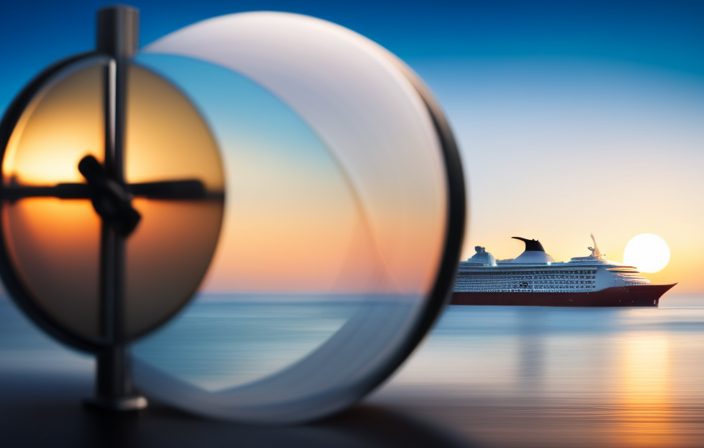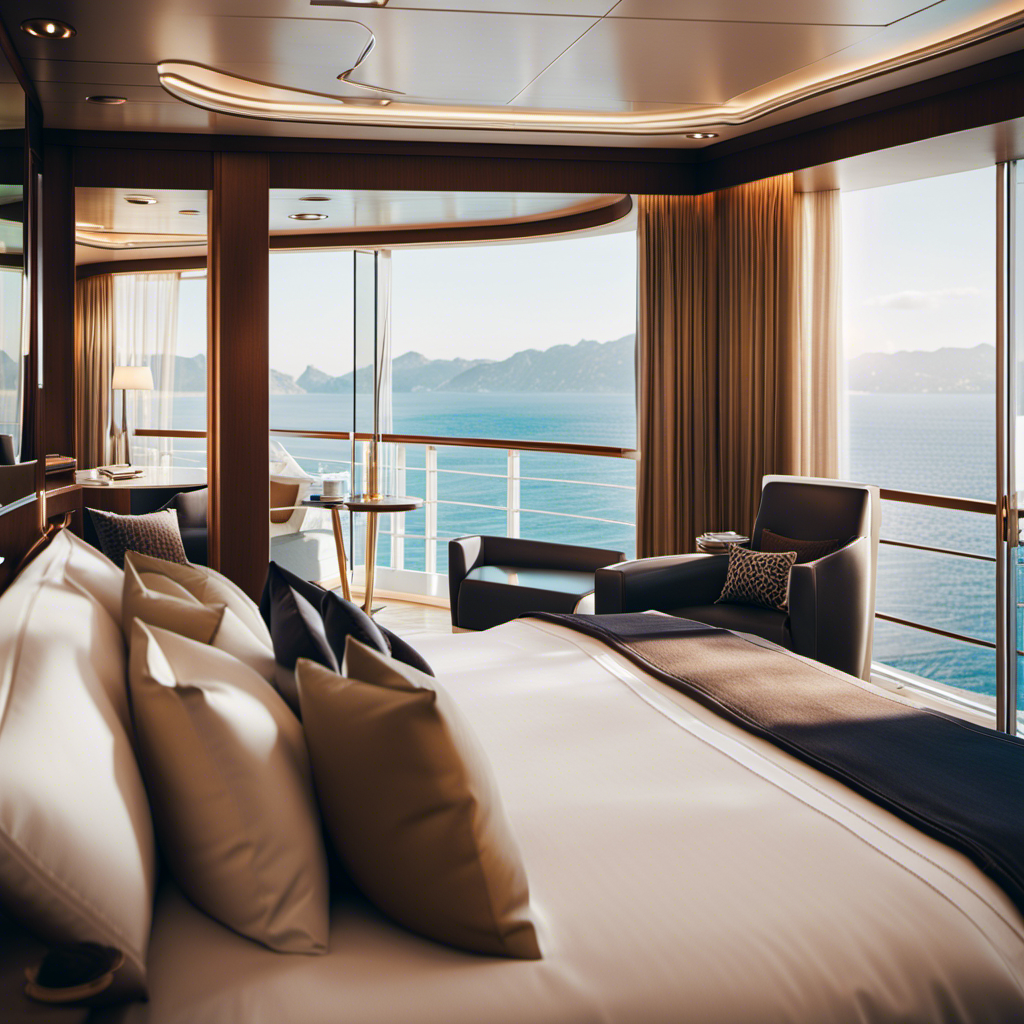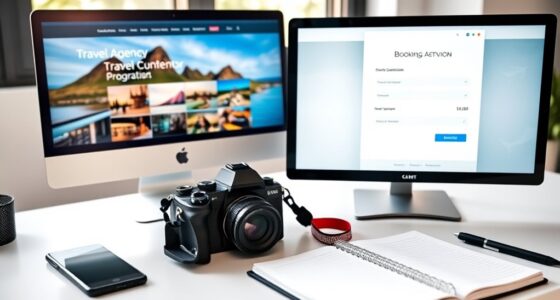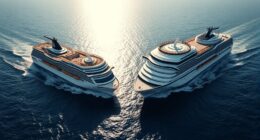Have you ever fantasized about getting away to a serene oasis, where the gentle breeze kisses your skin, and you discover new lands? I have exciting news for you. The ideal moment to embark on a cruising adventure is approaching fast. With my extensive experience in cruising, I firmly believe that selecting the right time to sail is crucial in making unforgettable memories that will stay with you forever.
From the Caribbean’s tranquil shores to Alaska’s breathtaking landscapes, each destination has its own ideal cruising season. But how do you determine the best time to go? Don’t worry, I’ve got you covered. In this article, we will dive into the factors to consider when deciding on the optimal time for your cruise.
From pricing and crowd levels to weather conditions and activity availability, we will explore everything you need to know to make the most of your voyage.
So, pack your bags and get ready to set sail at the perfect time for your dream cruise.
Key Takeaways
- The best time to go on a cruise depends on personal preferences and desired activities.
- Shoulder seasons often offer better deals and less crowded experiences.
- Different destinations have different optimal times to visit based on weather and activities.
- Researching specific destinations can help determine the best time to go on a cruise.
Best Months to Cruise
The best months to cruise vary depending on the destination and factors such as price, weather, and crowds. When planning your cruise, it’s important to consider these factors to ensure an optimal experience. The ideal time for cruising differs for each location, so research is essential.
For example, in the Caribbean, January, May, and September offer cheaper rates and less crowded conditions. Bermuda’s best months are April to October, with May and September offering the best deals. Alaska’s cruise season is from April to September, with May and June being the best months to spot killer whales. The Mediterranean’s cruise season runs from April to November, with early spring and fall providing ideal weather for exploring historic sites. Northern Europe’s best prices can be found in May, June, and September.
By considering these planning considerations, you can determine the best months to cruise and ensure a memorable vacation.
Price Considerations
When it comes to planning a cruise, finding the best bang for your buck is like discovering a hidden treasure chest amidst a sea of options. Price comparisons and budget-friendly options are crucial factors to consider.
Some months offer better prices than others, allowing you to save money without compromising on the quality of your cruise experience. For example, May and October are great months for Canada and New England cruises, offering the best value. Winter months, on the other hand, have the most favorable rates for Australia and New Zealand cruises.
By choosing the right time to cruise, you can enjoy all the amenities and activities on board while staying within your budget. So, weigh your options, compare prices, and set sail on a memorable journey without breaking the bank.
Crowd Levels
I prefer to choose a cruise when the crowd levels are lower. Managing cruise crowds is an important factor to consider for a more enjoyable and relaxing experience. When the number of passengers on board is lower, it allows for less congestion and shorter lines for activities, dining, and entertainment.
It also provides a more intimate atmosphere and better access to amenities on the ship. Opting for a cruise during shoulder seasons or off-peak times can often result in fewer crowds. Additionally, selecting less popular itineraries or sailing to lesser-known destinations can also help avoid large crowds.
Researching the busiest times for popular cruise destinations and planning accordingly can help ensure a more peaceful and uncrowded cruise vacation.
Weather Factors
Considering the weather is essential when deciding the best time to go on a cruise. Seasonal weather can greatly impact your cruise experience, so it’s important to choose the ideal cruising months for your desired destination. Here are some factors to consider:
-
Temperature: Different destinations have different temperature ranges throughout the year. Research the average temperatures during the months you’re considering to ensure they align with your preferences.
-
Precipitation: Some months may have higher chances of rain or storms, which can affect outdoor activities and excursions. Check the rainfall patterns for your chosen destination to avoid getting caught in a downpour.
-
Sunshine: If you’re looking for warm and sunny weather, aim for the months with the most sunshine. This will allow you to fully enjoy the outdoor amenities and relax under clear skies.
-
Sea Conditions: Certain months may have rougher seas, which can impact the stability of the ship. If you’re prone to motion sickness, consider selecting months with calmer waters.
-
Natural Phenomena: Keep in mind any natural phenomena that may occur during certain months, such as hurricanes or the Northern Lights. These can add a unique element to your cruise experience, but also require careful planning.
By taking these weather factors into account, you can choose the optimal time to go on a cruise that aligns with your preferences and ensures a memorable vacation.
Excursion Options
Exploring the available excursion options is crucial when planning the best time for a cruise. The range of excursion availability can vary depending on the time of year and the popularity of the destination.
Popular cruise destinations often offer a wide array of excursions to choose from, including cultural tours, adventure activities, and historical sightseeing. For example, in the Caribbean, you can explore ancient ruins in Mexico, go snorkeling in the crystal-clear waters of the Cayman Islands, or enjoy zip-lining through the lush rainforests of Jamaica.
In Alaska, you can go whale watching, take a helicopter tour over glaciers, or go dog sledding.
By researching and considering the excursion options available at different times of the year, you can ensure that you choose the best time for a cruise that aligns with your desired activities and interests.
Activity Availability
Activity availability on a cruise can greatly enhance the overall experience, providing a diverse range of options to indulge in during your vacation. Whether you’re seeking adventure, relaxation, or cultural immersion, cruise ships offer a multitude of activities to suit every taste. Here are some exciting options to consider:
-
Thrilling water sports such as snorkeling, scuba diving, and jet skiing, allowing you to explore the vibrant marine life.
-
Relaxing spa treatments and wellness activities like yoga and meditation, offering a chance to rejuvenate your mind and body.
-
Engaging workshops and classes, including cooking demonstrations, mixology lessons, and art workshops, allowing you to learn new skills.
-
Fun-filled onboard entertainment like Broadway-style shows, live music performances, and comedy acts, ensuring endless laughter and enjoyment.
-
Enriching cultural experiences such as shore excursions to historical landmarks, local markets, and traditional performances, providing a deeper understanding of the destinations you visit.
With a wide array of activity availability and cruise itinerary options, you’ll never run out of things to do and memories to create during your cruise vacation.
Destination Specifics
When choosing the best time to go on a cruise, it’s important to research the specifics of each destination. Different destinations have different optimal times to visit based on weather and activities. For example, in the Mediterranean, early spring and fall offer ideal weather for exploring historic sites, while July and August have hot weather and are busy with land-based travelers. To help you plan your cruise, here is a table showcasing the best times to visit specific destinations:
| Destination | Best Time to Visit | Pros of Peak Season |
|---|---|---|
| Mediterranean | Early Spring or Fall | Ideal weather for exploring historic sites |
| Northern Europe | May, June, or September | Warm and dry weather, almost 24 hours daylight |
| Canada and New England | May or October | Fall foliage in September, pleasant temperatures |
| Australia | Winter months (June to August) | Ideal for activities and excursions |
| Hawaii | May or September | Lush landscapes, floral blooms |
| Panama Canal | November to April | Sunny and dry weather |
Considering the best times to visit specific destinations allows you to make the most of your cruise experience. While cruising during peak season may have its advantages, such as better weather and availability of activities, it’s important to consider the potential drawbacks, such as larger crowds and higher prices. Ultimately, it’s about finding the right balance that suits your preferences and desired experiences.
Shoulder Season Benefits
During the shoulder season, I can take advantage of lower prices and fewer crowds on my cruise. Traveling during this time offers several benefits that enhance the overall experience.
One advantage of the off-peak season is the cost savings. With lower prices, I can enjoy the same cruise at a more affordable rate.
Additionally, the reduced crowds create a more relaxed and peaceful atmosphere on board the ship. I can easily find a spot by the pool or enjoy shorter lines for dining and activities.
The destinations also tend to be less crowded, allowing for a more immersive and authentic experience.
Overall, traveling during the shoulder season allows me to make the most of my cruise by enjoying cost savings and a more intimate and enjoyable environment.
Flexibility in Scheduling
Flexibility in scheduling allows me to choose the best time for my cruise based on factors like price, weather, and crowds. Having the ability to adjust my travel dates opens up a world of possibilities and allows me to take advantage of the optimal times to cruise. With flexible itineraries, I can maximize my vacation time and make the most of my cruise experience.
To help you understand the benefits of flexibility in scheduling, let’s take a look at the following table:
| Benefits of Flexibility in Scheduling |
|---|
| More options for finding the best prices |
| Avoiding peak travel seasons and crowded ships |
| Taking advantage of last-minute deals |
| Adjusting travel dates based on preferred weather conditions |
| Exploring different destinations based on availability |
By being flexible with my cruise dates, I can ensure that I get the best value for my money and create a customized itinerary that suits my preferences. Whether it’s finding the cheapest rates, avoiding crowds, or enjoying optimal weather, flexibility in scheduling truly enhances the cruise experience.
Frequently Asked Questions
What are some popular cruise destinations in Northern Europe?
Some popular cruise destinations in Northern Europe include the Norwegian Fjords, Iceland, and the Baltic Sea. The best time to cruise in Northern Europe is during May, June, and September, when the weather is warmer and prices are more favorable.
Are there any specific activities or excursions that are recommended for a Caribbean cruise?
For a Caribbean cruise, I recommend snorkeling in the crystal-clear waters of the ABC islands (Aruba, Bonaire, Curacao) or exploring the stunning Mayan ruins in Cozumel. The best time to go for optimal weather is during the winter months.
How does the weather in the Mediterranean differ between the early spring and summer months?
In the Mediterranean, the weather in early spring is typically cooler with temperatures in the 50s/60s and some rain. In summer, the weather is hot, perfect for enjoying the sun and exploring the region’s historic sites.
Are there any cruise lines that offer transatlantic voyages throughout the year?
Yes, there are cruise lines that offer transatlantic voyages throughout the year. Some options include Cunard, which has regular transatlantic cruises, and other luxury cruise lines that offer transocean voyages in April, October, and November. The best time to book depends on individual preferences and desired activities.
Can you provide information on the daily cost of a Panama Canal cruise during the sunny and dry months?
During the sunny and dry months, the daily cost of a Panama Canal cruise can vary depending on factors such as the cruise line, cabin type, and itinerary. It is recommended to research and compare prices from different cruise lines to find the best deal.
Conclusion
Well, folks, it’s been quite a journey exploring the optimal times to go on a cruise. From considering price and crowds to weather and activities, there’s a lot to think about.
But let’s be real here, planning a cruise can feel like navigating a maze of options. It’s like trying to find your way out of a buffet after indulging in one too many desserts. But fear not, my fellow cruise enthusiasts, because with a little research and flexibility, you can set sail at the perfect time.
So grab your captain’s hat and get ready to embark on an unforgettable adventure!










